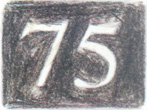
“WHERE was Camilo Pessanha's house?" The question echoes repeatedly from the mouths of visitors or new arrivals in Macau.
The reply is almost always dubious, vague or imprecise. The plot where Si-Toi Building now stands is pointed out. On the ground floor there are two shops, a door giving access to a nineteen-storey building and a branch of the Hong Kong Bank on the comer with Calçada de S. João. Halfway along the façade, at the door to Maxim's bakery, there is the only police registration number for 73-75G. Further left, at the main door to the building and running contrary to the usual order for street numbers, there are the numbers 75-79.
All the indications we have point to the fact that Camilo Pessanha lived at nº 75, Rua da Praia Grande.
The reason for this lack of precision can be found in the history of how the buildings were put up in the particular block which lies between Avenida Almeida Ribeiro and Calçada de São João and the confusion which occurred after 1937 between the buildings numbered 73 and 75.
This is possibly why, even today, the poet's final and most renowned home is identified as being the building which was in fact nº 73. This building stood next to the Rodrigues company and quite self-respecting publications have indicated this as being the house.
Thus the photograph shown on the following page in order to erase any further doubt, is in fact of the building just before Camilo Pessanha's house. It must have been taken shortly before it was demolished in the early 70s.
That this was a case of mistaken identity becomes obvious on reading the few accounts of the poet's home which have been reprinted here.
Sebastião da Costa describes it as "a dark, secluded little house" located behind a "green railing". Access to the house was gained across a "broad patio which could have been from the North of Portugal with steps up to the first floor".
In the February 11th, 1968 edition of the newspaper Notícias de Macau, the Macanese researcher José de Carvalho e Rego states that Camilo Pessanha had moved from Calçada do Tronco to 75, Rua da Praia Grande, "a house which has been demolished and is now a private garden".
Pessanha lived in three houses in Macau. Initially, he was billeted for forty patacas per month in the hotel of his "friend Hing-Ki", as he wrote to his father when he first arrived in 1894. This was the famous Macao Hotel, which in 1923 was renamed the New Macao Hotel under the management of Kuan Yok Chan. The New Macao Hotel closed in 1927. The wealthy Chinese merchant Lou Lim Iok renovated the building and the new luxurious facilities reopened on January 15th, 1928 as the famous Hotel Riviera. This building stood on the comer of Praia Grande and Avenida Almeida Ribeiro but was demolished in 1971 to make way for the Nam Tung Bank building (cf. Manuel Teixeira, Toponímia de Macau, Imprensa Nacional, 1979).
In the same work, Manuel Teixeira quotes Henrique de Senna Fernandes as follows:
We can be sure that the mansion house which stood there in around 1880 was originally the Macao Hotel managed by Pedro Hing Kee who was described by Adolfo Loureiro in his book Oriente as "a stalky, jovial Chinese man who received me expansively and talked to me softly in unintelligible Portuguese.
Adolfo Loureiro continues his account, written on 17th September, 1883:
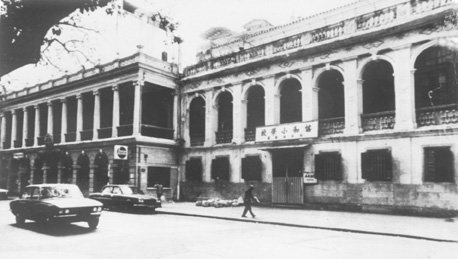 Nº 73, Rua da Praia Grande, mistakenly identified as the house where Camilo Pessanha lived. The poet lived in the building next door which was demolished in 1937 (photograph lent by the Architectural Heritage Department of ICM)
Nº 73, Rua da Praia Grande, mistakenly identified as the house where Camilo Pessanha lived. The poet lived in the building next door which was demolished in 1937 (photograph lent by the Architectural Heritage Department of ICM)
I moved in completely today, into quarters which are absolutely independent and are furnished according to my instructions. On the covered balcony there are fresh, comfortable armchairs and rattan sofas; in the living room there is a large table, plants and pictures, a writing table, a small table for when I wish to lunch or dine in my rooms and so on. In the bedroom there is an enormous bed, tables, occasional tables and a wardrobe. Finally there is a small, glazed inside patio which has a bath room with one of those enamelled Chinese bathtubs reminiscent of Greek or Roman vats... Dinner was served profusely and in good order with food which was half English and half Portuguese but which was not unpleasant.
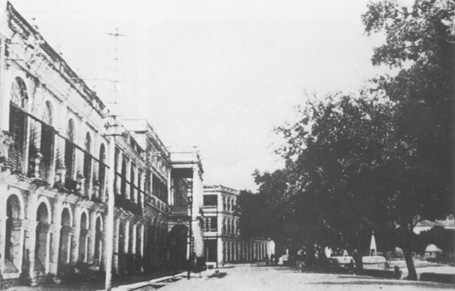 The eastern end of Praia Grande showing the Palácio das Repartiçes and Hing King Hotel where Pessanha first stayed on arriving in Macau
The eastern end of Praia Grande showing the Palácio das Repartiçes and Hing King Hotel where Pessanha first stayed on arriving in Macau
According to Emilio de San Bruno,
it was not a luxury hotel, but it offered a complete range of services, and the healthy home comforts of a well-regulated, clean British hotel. Yet the owner was Chinese! He was so familiar with the hotel profession, however, that his establishment would have been the envy of a Lisbon hotel run by Portuguese and Galicians.
The main entrance to the Macao Hotel was on Avenida Almeida Ribeiro but the hotel itself stood on the Praia Grande side, a few numbers short of the house where Camilo Pessanha would live later on. Father Teixeira gives the following description:
Praia Grande Bay curved delightfully at that point and the murmuring sea lapped nearby just where the trees stood in a mysterious soliloquy with the granite wall. What most charmed the "exiles" was the sight, on certain evenings, of the moon scattering her beams on the waves and the indistinct tropical scents wafted in on the southern breeze.
These early days in Pessanha's stay must have been entertaining. They may well have been imbued with that euphoria which affects new arrivals: I visited two clubs, bought cigars and went to the Chinese opera -- a spectacle which goes on night and day for a week. I even danced alone to the sound of those Sunday waltzes... hammered out by Poiares.... on an old harpsichord from a monastery which the Mandarin of the guest house -- our friend Hing-Ki -- has in the dining hall for the amusement of the Christians.
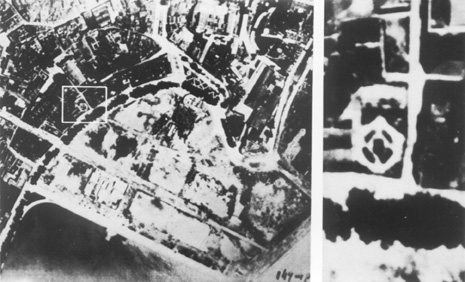 Detailed aerial view of the block on Rua da Praia Grande between Almeida Ribeiro and Calçada de São João where Pessanha's house stood with a clear close-up of the garden which was subsequently made on the same plot (first aerial photograph of Macau's city centre, taken in 1940)
Detailed aerial view of the block on Rua da Praia Grande between Almeida Ribeiro and Calçada de São João where Pessanha's house stood with a clear close-up of the garden which was subsequently made on the same plot (first aerial photograph of Macau's city centre, taken in 1940)
Let us return now to the main thread of the argument. In an article dated June 1953, Guilherme de Castilho had confessed to his disappointment: I had even brought my camera to take a picture of the house where the poet had lived. It has been demolished, razed to the ground: there was no trace of it!
In fact, the house where Camilo Pessanha had lived had been demolished sixteen years before.
Even though there is no written proof of any rental in his name, we can be almost completely certain that Pessanha lived at number 75, Praia Grande, in other words the building next door to number 73. Neither have we been able to find any plans of the house as there was no requirement in those days to submit these documents to the Public Works Department and also many archives have been lost due to a variety of factors.
THERE is still some hope, however, that the poet's house might some day be uncovered in a map, an architectural document or an old photograph of that quarter of the city. Nº73, Praia Grande (still standing) is described in 1894 in the Macau Buildings Records under registration number 4272:
An urban building standing at number seventy three, Rua da Praia Grande, in the Cathedral Parish, has two floors and a shop. On the first floor there is a terrace and on the second a varandah. The shop has six windows with iron gratings and faces north. To the north are the gardens of the houses standing at eighteen and twenty on Largo da Sé. Rua da Praia Grande lies to the east with number seventy five and to the west is number seventy one of the same street. The house is valued at twelve thousand and six hundred patacas...
The Building Tax records in the Finance Department describe the house as:
A two-storey urban building with a courtyard, well and terrace occupying 227.90 square metres between the wall onto Praia Grande and the railings standing in front of numbers 73 and 75, Praia Grande. To the north it faces onto number 18, Largo da Sé; to the south, Praia Grande; to the east, number 75 of the same street; and to the west number 71.
There can be no doubt that these descriptions coincide with the façade shown in the photograph.
The ground floor was rented out in April 1925 to the company called Au Paradis des Dames, Limitada represented by its managers Maria Celeste de Senna Fernandes Menezes Ribeiro, widow, and Ana Tereza de Senna Fernandes Paes d'Assumpção, single, both adults, businesswomen and resident in Macau.... The property was rented out by its owner, Dona Ana Tereza Ferreira "for a period of ten years to be counted from the 1st of May, 1925".
Henrique de Senna Fernandes tells us that it was a boutique run by a French lady, Madame Le Bon. The partners were later to open a bakery on Almeida Ribeiro just above the Banco Nacional Ultramarino. This was most probably the shop called "Delícias" which became the new meeting place for the Macanese community and two years later the lease was extended for a futher twelve years until 1947.
Thus we know that for almost a year, Camilo Pessanha would have come upon this sophisticated Parisian shop immediately to the right of his door.
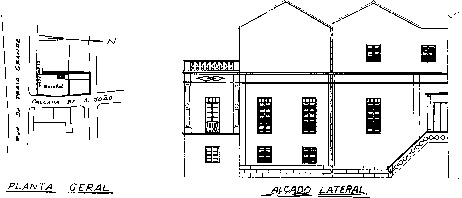 Street plan and side elevation of Nº 73, Rua da Praia Grande taken from the file dealing with the request for alterations submitted to the Public Works Technical Department in 1938.
Highlighted on the street plan can be seen the plot where Pessanha's home had stood until the previous year (Plans from the Archives of the Public Works Department)
Street plan and side elevation of Nº 73, Rua da Praia Grande taken from the file dealing with the request for alterations submitted to the Public Works Technical Department in 1938.
Highlighted on the street plan can be seen the plot where Pessanha's home had stood until the previous year (Plans from the Archives of the Public Works Department)
The reference to the size of the plot occupied by the property is confirmed in Sebastião da Costa's account in which he described how the Chinese community used to draw water from a well in a square in front of the poet's house.
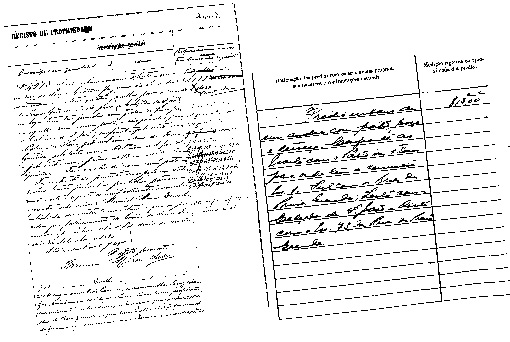
Description of nº 75 in the entry in the Macau Building Tax Records (Archives of the Finance Department, 1930s) and the entry in the Building Records (Archives of the Building Records Office, 1894)
A lateral elevation of the building at number 73 was submitted to the Technical Department of the Public Works Department in 1938 with a request from the owner, Cissy Li. Cissy Li had acquired half of the building from her husband, presumably the upper floor where she had established a Chinese school. The request to the Public Works Department was to increase the size of the windows and a canopy over a side entrance in order to improve the interior of the class rooms and access into the ground next door left empty after number 75 had been demolished the previous year.
We know from a Security Police Report written on the 15th of October 1938 that "there is a Chinese school installed there".
Shortly afterwards, part of the ground was made into a park which is perfectly clear in the first aerial photograph to be taken of Macau, in 1940 and also corresponds to the report given by José de Carvalho e Rego.
NUMBER 75, Rua da Praia Grande, regis tered in the Building Records under number 4273 is described in the same document as follows:
An urban building standing at number seventy five, Rua da Praia Grande, in the Cathe dral Parish, with one floor and four windows facing onto Rua da Praia Grande and eight onto Calçada de São João. The shop has three windows with iron gratings facing onto the same street and a door and six windows facing onto Calçada de São João. To the north it faces onto the Pátio das Flores and to the south, Rua da Praia Grande. To the east lies Calçada de São João and to the west, next door, Nº 73 on the same street. The property is valued at nine thousand patacas.
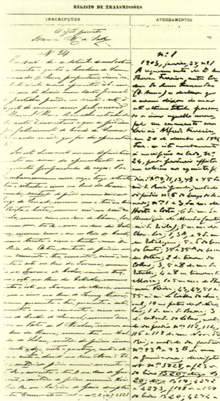
Amendment written in Pessanha's hand to the entry concerning Dona Ana Tereza Ferreira's properties with a mention of nº 75
I have provided this description based on a formal request for division of the property written on the twenty seventh of August in the year eighteen hundred and ninety four which was prepared by the notary Manuel Maria Borralho using the deeds which were handed over on the death of Count Senna Fernandes and registered under nº 1 of the daily record for the twenty second of September, 1894.
The Building Contributions file noted that the property had a single storey with a courtyard, well and terrace. It faced the Pátio das Flores to the north, Rua da Praia Grande to the south, Calçada de São João to the east and number 73, Rua da Praia Grande to the west.
This same document stated that the property occupied an area of 813 square metres and that its previous owners were Ana Tereza Ferreira, Casimira Senna Fernandes Basto and Lam U.
On the 22nd of September 1894, number 75 was registered, along with dozens of other buildings, under the name of the Countess Senna Fernandes less than a month following the death of her husband.
It is worth pointing out that a note dated January 1903 on the same page of the Building Records, written in the hand of Camilo Pessanha (who had already been appointed Notary of Building Records in 1899) states that: Madame Ana Thereza Ferreira, formerly known as the Countess Senna Fernandes, has declared that she has ceased to use this title since her marriage to Leoncio Alfredo Ferreira on December 20th 1894. This note has been added to the entry opposite and is effective for the following buildings: numbers 9, 11, 13, 73 and 75 of Rua da Praia Grande.
On September 24th, 1894, Dona Ana provided Nº 75 (along with other buildings) as security for the successful bidders in a tender for dealing in opium, various gambling enterprises and the sale of pork.
On November 21st, Nº 75 was again provided by the same owner as security for the sum of six thousand two hundred and sixty seven patacas for the exclusive contract to sell, import and export oil in Macau, Taipa and Coloane awarded to Li Kiam Chim for a period of two years from July 1st 1899 until July 30th 1901.
On the same day, Nº 75 was yet again mortgaged for one thousand eight hundred and four patacas as security for a contract awarded to Li Kiam Chim to operate a Fantan gambling hall in Taipa for a five-year period lasting from July 1st 1899 to July 20th 1904.
Li Kiam Chim is mentioned in Manuel Teixeira's book Toponímia de Macau in a description of the buildings which stood on Praia Grande in 1910. Mr Li appears as one of the wealthy Chinese owners of a typically Chinese building on the street which also counted the Count and Countess Senna Fernandes, Carlos Pais d'Assumpção and General António Joaquim Garcia amongst its residents.
Camilo Pessanha passed away in 1926. On April 14th, 1930 when his landlady Ana Tereza Ferreira died, number 75 was left to Casimira Senna Fernandes Basto in the will.
On November 3rd, 1931 the property was conveyed from Casimira Senna Fernandes Basto and her husband José Maria de Castro Basto "property-holders resident in Hong Kong" to Lam U "property-holder resident in Macau" for the sum of eighteen thousand patacas.
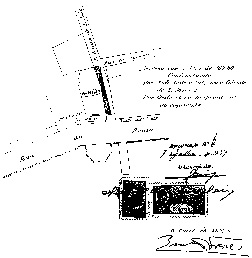
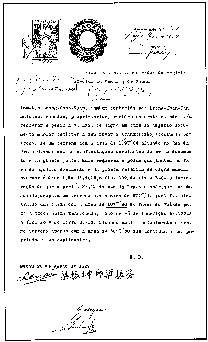
Request from the Owners to the Registrar of the Building Records dated June 20th, 1937 stating that nº 75 had been demolished and confirming that the house had, in fact, stood back from the street.
Praia Grande was paved from Rua do Campo as far as Tanque dos Mainatos in 1924 and 1925 so Pessanha would have seen the avenue when the work was completed.
In February 1932, an amendment to the records was made, stating that Leong-Chan Kuan had bought half the building from her husband Lam U for the sum of seven thousand patacas.
A year later, part of the property was transferred to the National Revenue as "part of a deal made with Lam U and his wife Leong-Chan Kuan".
On July 7, 1937, the building was finally demolished, pursuant to a request from Lam U and his wife Leong-Chan Kuan:
I hereby declare that the building at number 75, Rua da Praia Grande... was demolished leaving a piece of ground covering 674 square metres.
Furthermore, I declare that a strip measuring 107.80 square metres was set aside for the State in exchange for another plot... leaving the original site with a surface area of 566.20 square metres.
On the 12th of the same month, "half" of the buildings registered under 4272 (number 73) and 4273 (number 75) was conveyed to the name of Leong-Chan Kuan "having purchased them from Lam U... for the price of $15,000.00".
IT is really at this point that the confusion between the buildings at number 73 and 75 arises. They had in fact stood together but after the latter was demolished it was, to all intents and purposes, integrated into the former. This is reflected in documents dated as early as 1938. The building which was recently erected on the site where 73 and 75 had stood in former times only served to blur the issue even more.
Burdened with endless mortgages in the midst of so many respectable residences, number 75 seemed to be haunted by the spectre of bad feng-shui or at least some strange curse.
The block as a whole witnessed generations of schools, offices, businesses, yet number 75 alone was neglected by its owners: mortgaged by some, sold by others, and demolished almost as soon as it fell into the hands of its last owner.
The main reason behind this action must have simply been its age, a view reinforced by Osório de Castro's impression of it as a "seventeenth or eighteenth century mansion".
In my opinion, it was probably one of those Portuguese influenced Macanese-Pombaline buildings which used to abound in Macau. They lacked the grandeur and size which merited ostentatious façades gracefully lining the bay with their rhythmical porticoes.
Dona Maria do Espírito Santo Manhão, the poet's granddaughter, was able to confirm that the house had neither a grand porch nor porticoes, that it occupied a single storey and that the courtyard was modest but large enough for the poet to store his rickshaw. She recalled the shop windows with their gratings and the flight of around twelve steps leading up to the right hand side of the building and a room stuffed with antiques where the poet received more formal visits. To the left there was a door leading to an inner flight of stairs twisting left and up into the antechamber of Camilo's bedroom, also crammed with objets d'art.
Another memory she brought to mind was watching the funeral of her grandfather from the window of the living room giving onto Rua da Praia Grande.
Those of a literary turn of mind might notice the double fate of poet and house as if they were united in the same lethal destiny. Perhaps it was that the walls of the house called to him, or that he himself cut short its life with his wistful call: " O morte vem depressa| Acorda, vem depressa| Acode-me depressa..."
What cannot be denied is that the shell of the house in which he remained cloistered during his life was quick to follow his physical disintegration like fruit rotten from the core.
There is no trace of the building for future reference but now, with hindsight, it would surely be a graceful act to erect a memorial plaque marking the place where the author of Clepsidra lived.
start p. 21
end p.